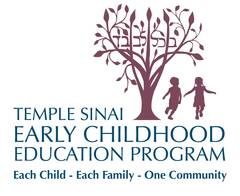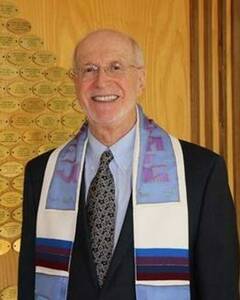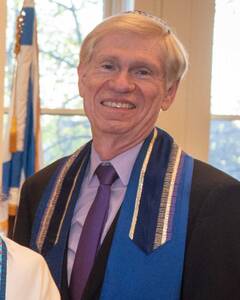High Holy Days 2025


Click here to view full schedule.
Guest Tickets
K-5 Children's Activities HHD 2025
Early Childhood Activities HHD 2025

The Early Childhood High Holy Days Program is available for children 18 months to 4 years whose parents/guardians are attending the 9:00am services on Rosh Hashanah (Tuesday, September 23) and / or Yom Kippur (Thursday, October 2). Parents/guardians must remain in the building while their children attend the program. If you do not have tickets for the adult service, you may contact the Temple office to inquire.
To register for either or both sessions of the Early Childhood High Holy Day programming, please submit by Wednesday, September 17.
Book of Remembrance
Our tradition teaches us to honor the memory of our departed loved ones during Yizkor services on the holiest day of the year, Yom Kippur. At Temple Sinai, we embrace this tradition. Each year, we invite our congregants to submit the names of their loved ones for inclusion in our annual Book of Remembrance.
Click here to view listings from last year’s Book of Remembrance.
If you would like to include the names of your loved ones in the 2025 Book of Remembrance, please complete this form BY AUGUST 29th. Your name will be listed before the names of those you are remembering.
We accepted donations and listings through September 2nd but it is closed as the book is now being prepared.
Please contact Karen in the Temple office with any questions.

Rabbi Kasdan will be leading a Study Session on Yom Kippur afternoon at 2:15pm.
A difficult conversation with Rabbi Emeritus Peter E. Kasdan
How do we reconcile the “built in” conflict between Life and Death,
Good and Evil, presented to us in this morning’s Torah portion?
Is it possible to support the State of Israel in light of the Gaza Crisis?
Does our concern for the release of the remaining hostages supersede what should rightfully - Jewishly - be our concern for human life ”
Study Materials: Reform Movement Statement on Gaza and The Two Inclinations of Human Beings
The sessions will be available on Zoom and the links and Password will be found in Kol Sinai. You can gather in person on the third floor at Temple Sinai to watch with others if you choose.

Rabbi Gershon will be leading a Study Session on Yom Kippur afternoon at 3:15pm.
Rabbi Gershon will be here in person.
Living a Life of Wisdom According to Ecclesiastes/Kohelet
Join me (in person and on Zoom) for an exploration of the book of Ecclesiastes, a fascinating reflection on the meaning of life and death. Composed in the Hellenistic period (3rd century BCE), the insights of this biblical book are amazingly contemporary.
We will learn what Ecclesiastes meant by his most famous biblical statements including "Utter futility! All is futile! and "A season is set for everything, a time for every experience under heaven."
Together we will uncover how Kohelet's theology differed markedly from the conventional beliefs of his time.
We will learn Ecclesiastes' timeless advice on how to live a life filled with satisfaction and purpose.
Study Materials: Living a Life of Wisdom According to Ecclesiastes
The session will be available on Zoom and the links and Password will be found in Kol Sinai. You can gather in person on the third floor at Temple Sinai to watch with others if you choose.

High Holy Days & Fall Festivals
Rosh HaShanah (literally, “Head of the Year”) is the Jewish New Year, a time of prayer, self-reflection, and t'shuvah. We review our actions during the past year, and we look for ways to improve ourselves, our communities, and our world in the year to come. The holiday marks the beginning of a 10-day period, known as the Yamim Nora-im (“Days of Awe” or “High Holidays”), ushered in by Rosh HaShanah and culminating with Yom Kippur (the “Day of Atonement”). Rosh HaShanah is widely observed by Jews throughout the world, often with prayer and reflection in a synagogue. There also are several holiday rituals observed at home.
Rosh HaShanah is celebrated on the first day of the Hebrew month of Tishrei, which – because of differences in the solar and lunar calendar – corresponds to September or October on the Gregorian or secular calendar. Customs associated with the holiday include sounding the shofar, eating a round challah, and tasting apples and honey to represent a sweet New Year.
Yom Kippur means "Day of Atonement" and refers to the annual Jewish observance of fasting, prayer, and repentance. Part of the High Holidays, which also includes Rosh HaShanah (the Jewish New Year), Yom Kippur is considered the holiest day on the Jewish calendar.
Yom Kippur is the moment in Jewish time when we dedicate our mind, body, and soul to reconciliation with our fellow human beings, ourselves, and God. As the New Year begins, we commit to self-reflection and inner change. As both seekers and givers of pardon, we turn first to those whom we have wronged, acknowledging our sins and the pain we have caused them. We are also commanded to forgive, to be willing to let go of any resentment we feel towards those who have committed offenses against us. Only then can we turn to God and ask for forgiveness. As we read in the Yom Kippur liturgy, “And for all these, God of forgiveness, forgive us, pardon us, and grant us atonement.”
Fall Festivals
Sukkot is one of the most joyful festivals on the Jewish calendar. “Sukkot,” a Hebrew word meaning "booths" or "huts," refers to the Jewish festival of giving thanks for the fall harvest. The holiday has also come to commemorate the 40 years of Jewish wandering in the desert after the giving of the Torah atop Mt. Sinai.
Also called Z’man Simchateinu (Season of Our Rejoicing), Sukkot is the only festival associated with an explicit commandment to rejoice. Sukkot is celebrated five days after Yom Kippur on the 15th of the Hebrew month of Tishrei, and is marked by several distinct traditions. One, which takes the commandment to dwell in booths literally, is to erect a sukkah, a small, temporary booth or hut. Sukkot (in this case, the plural of sukkah) are commonly used during the seven-day festival for eating, entertaining and even for sleeping.
Our sukkot have open walls and open doors, and this encourages us to welcome as many people as we can. We invite family, friends, neighbors, and community to rejoice, eat, and share what we have with each other.
Another name for Sukkot is Chag HaAsif (Festival of the Ingathering), representing the importance in Jewish life of giving thanks for the bounty of the earth.
Sh'mini Atzeret and Simchat Torah: Immediately following Sukkot, we observe Sh'mini Atzeret and Simchat Torah, a fun-filled day during which we celebrate the completion of the annual reading of the Torah and affirm Torah as one of the pillars on which we build our lives.
As part of the celebration, the Torah scrolls are taken from the ark and carried or danced around the synagogue seven times. During the Torah service, the concluding section of the fifth book of the Torah, D’varim (Deuteronomy), is read, and immediately following, the opening section of Genesis, or B'reishit, is read. This practice represents the cyclical nature of the relationship between the Jewish people and the reading of the Torah.
Historically, Sh’mini Atzeret and Simchat Torah were two separate holidays (a day of reflection after the end of Sukkot and a celebration of Torah the following day). However, in Israel and in Reform congregations, which generally observe one day of holidays rather than two, Sh’mini Atzeret is observed concurrently with Simchat Torah.
High Holy Days 2023 Sermons
High Holy Days 2022 Sermons
Sermons
High Holy Days 5782
Rabbi Glazer:
Text of the Rosh Hashanah Sermon
Text of the Kol Nidrei Sermon
Text of the Yom Kippur Morning Sermon
Videos for Kids & Families
Bim Bom’s Rosh Hashanah Video for Kids
Jumpin’ Jerusalem’s Rosh Hashanah for Kids
Yom Kippur Tel Aviv: This is how it looks!!
Bim Bom’s Yom Kippur: “Really, Really Sorry!”
Books for Adults
This Is Real and You Are Completely Unprepared: The Days of Awe as a Journey of Transformation by Alan Lew
Opening Your Heart with Psalm 27: A Spiritual Practice for the Jewish New Year by Rabbi Debra Robbins
The Days Between: Blessings, Poems, and Directions of the Heart for the Jewish High Holiday Season by Marcia Falk
Days of Awe: A Treasury of Jewish Wisdom for Reflection, Repentance, and Renewal on the High Holy Days by S.Y. Agnon

